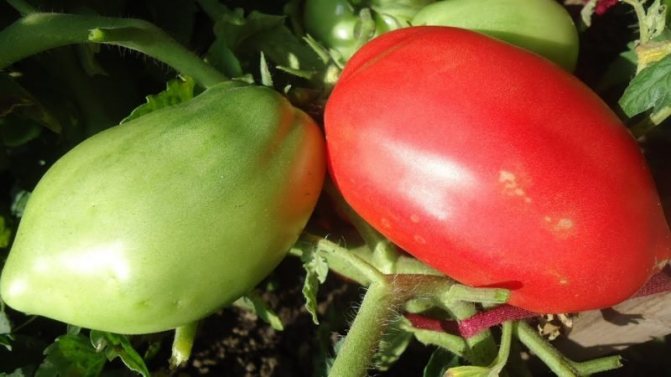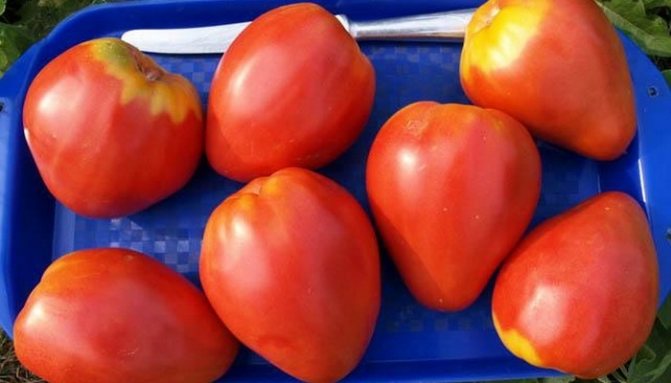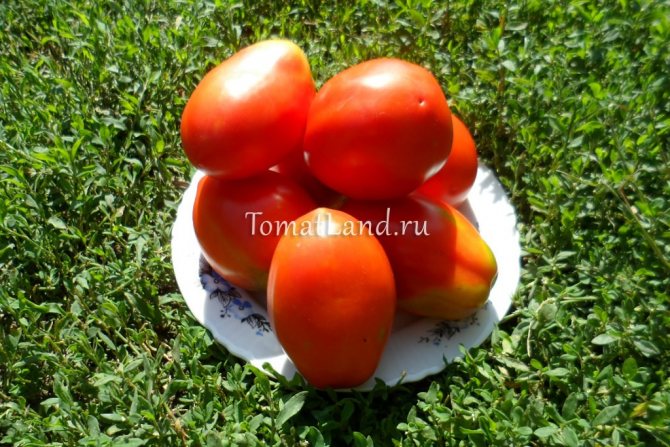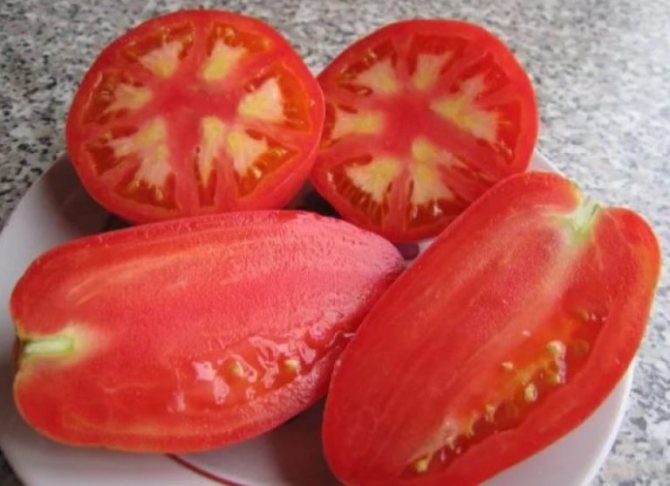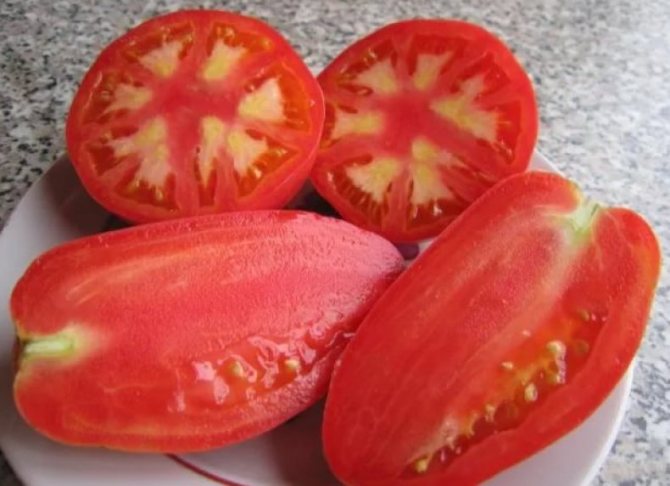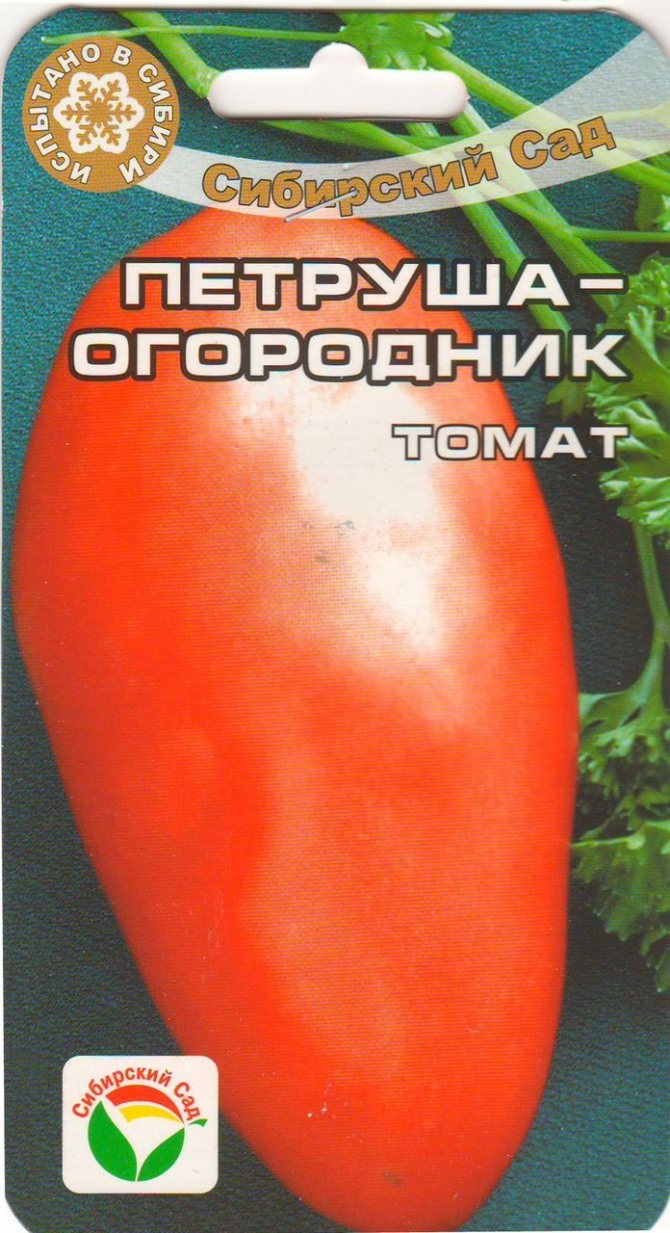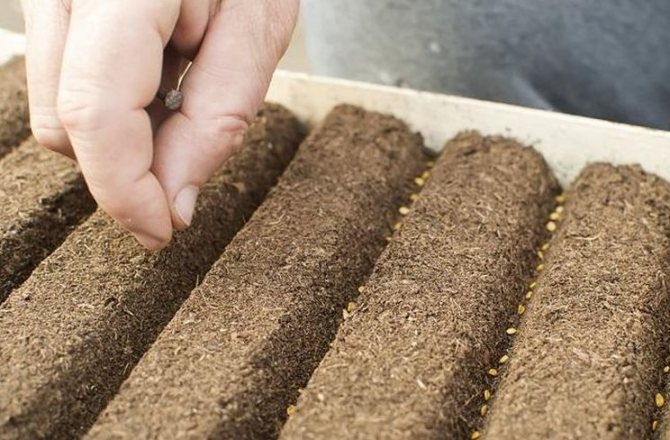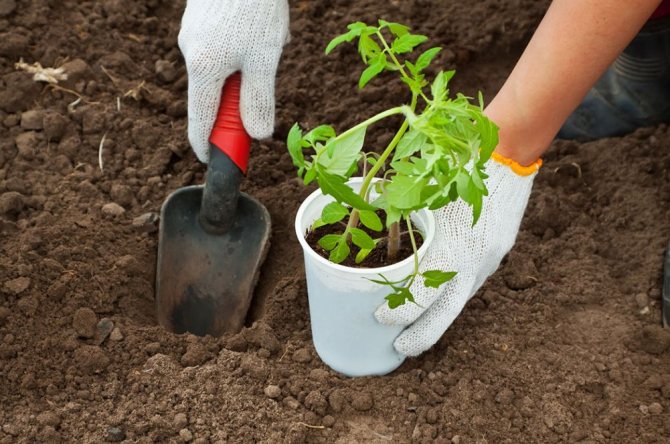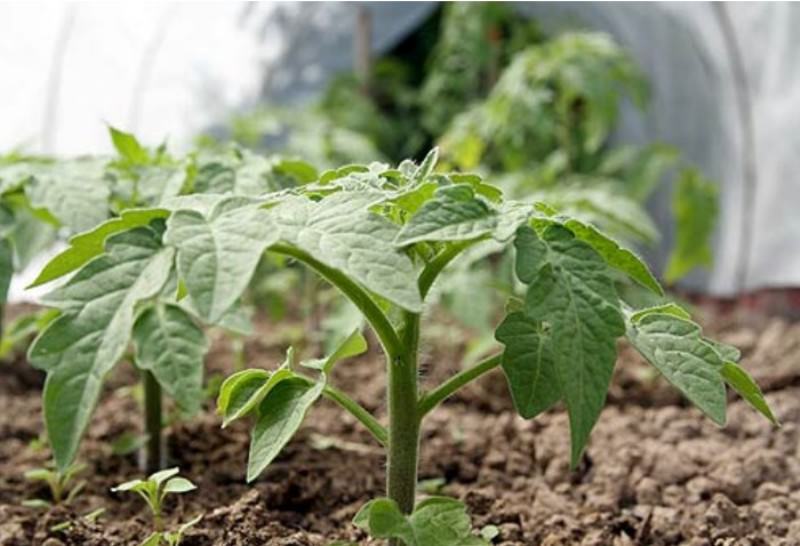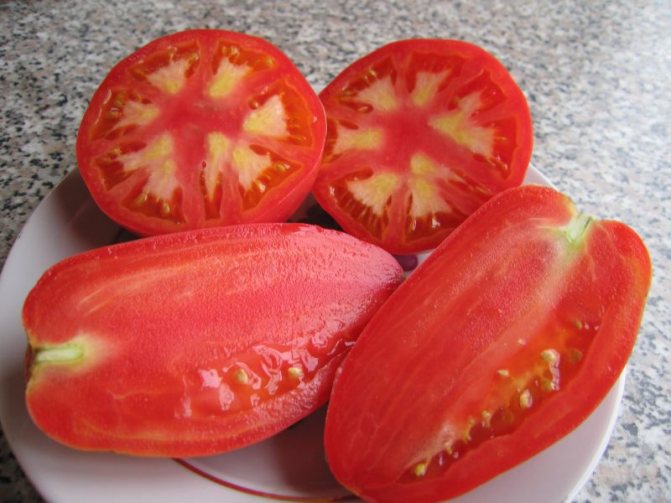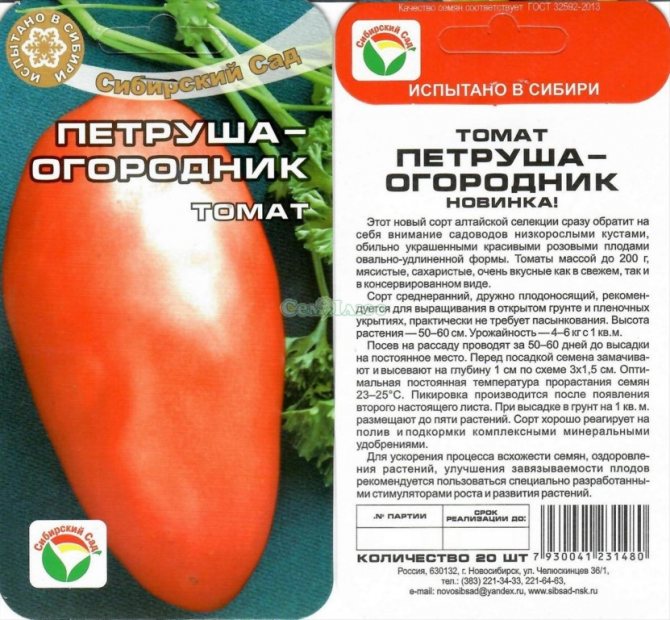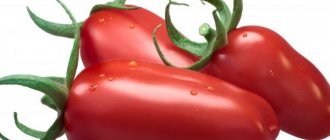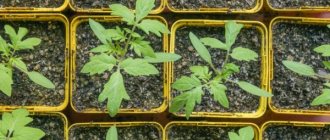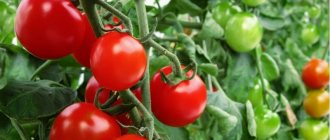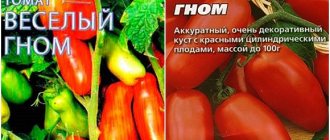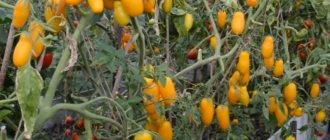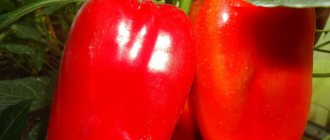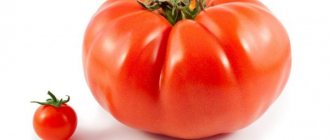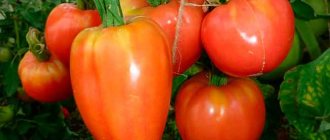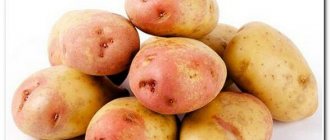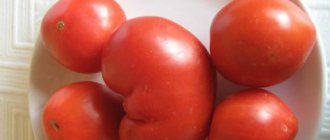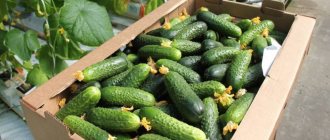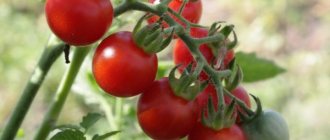Vegetable growing »Tomatoes
0
871
Article rating
There are varieties on the tomato market that combine very good qualities, at first glance, incompatible - early maturity and large-fruited, high yield and high taste. Tomato Petrusha Gardener is just such a variety. This tomato is loved by many gardeners, despite the fact that it is a very recently bred variety.
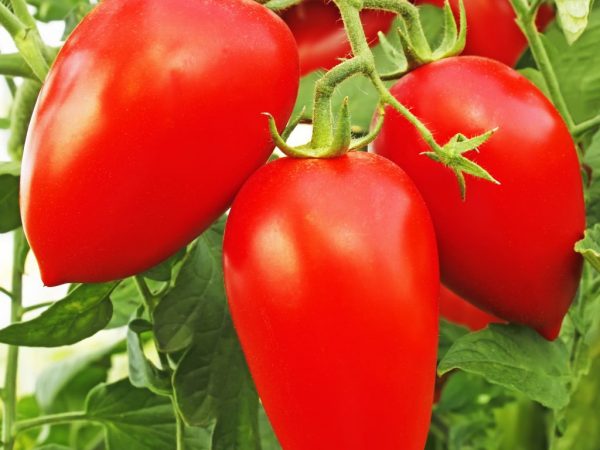
Characteristics of the tomato variety Petrusha Ogorodnik
Characteristics and description of tomato varieties
Tomato "Petrusha gardener" has a number of distinctive advantages that distinguish it favorably against the background of other varieties of tomatoes, such as:
- no need for pinching the bush;
- long fruiting period;
- good tolerance to dry periods;
- resistance to a wide range of tomato diseases;
- versatility of application.
Of the shortcomings, it should be noted only the obligation to comply with the rules and conditions of growing, as well as caring for the plant. It is this factor that has a great influence on the yield.
The variety is mid-season. Unpretentious care. Recommended for outdoor cultivation. Although the variety descriptions often indicate that it does not need tying and pinching, many gardeners with experience growing this tomato indicate the need to form bushes. The yield is 6.4 kg / m2.
The advantages of the variety include:
- Heat resistant.
- Good regenerative ability of bushes after hypothermia.
- Long-term fruiting.
- Fleshy flesh and sweet taste of the fruit.
In the open ground or under shelters, the tomato variety with the frivolous name Petrusha the gardener gives significant yields, prompting summer residents to grow this variety.
Petrusha the gardener was bred by Russian breeders. This is a mid-early variety of the determinant type. It is one of those plants that bear fruit better outdoors than in greenhouse conditions. The bushes are low - up to 60 cm in height. If a tomato is grown in a greenhouse, it will almost double its size. Then the bushes can reach 1-1.2 m in height.
Yield
Judging by the reviews, the yield of the variety is higher in open ground and, subject to agricultural technology, reaches 4-6 kg per bush.
The fruits are fleshy and dense, sweet in taste. The weight of one tomato is 150-180 g. Seed nests - from six pieces. 5-7 fruits grow in the brush.
Tomatoes of this variety are used:
- for pickling whole (applies to small fruits);
- fresh;
- as an ingredient for processing into juices, ketchups and tomato sauces.
Tomatoes of this variety are well stored.
Here are the advantages of the variety noted by tomato growers:
- good productivity;
- bushes do not need to be pinned;
- universal use of fruits;
- plants bear fruit for a long time;
- plants tolerate drought well.
But some gardeners pay attention that the variety also has disadvantages:
- bushes must be tied up;
- the fruit may crack.
Valentina Yurievna, Tambov: “I conducted an experiment. I planted half of the seedlings in a garden bed on the street, and half in a greenhouse. After planting in the greenhouse, the tomatoes froze in growth. When they began to grow, the first flowers had already appeared on the beds on their tomato brothers. The harvest was better outdoors. "
Alexander, g.Kopeysk: “I tried to plant Petrusha the gardener last season. The impressions of the variety are good. You don't have to spend a lot of effort on leaving. The tomatoes are oblong and look good in a jar when pickled, my wife likes it very much. "
Albina Sergeevna, Vologda region: “I liked the variety for its simplicity of care. Produces excellent fruit without a greenhouse. Does not require frequent watering and tolerates short-term drought without loss of yield. The fruits are strong. "
Lyudmila Vikentievna, Ivanovo: “I grew tomatoes in the open field. Bushes are strong, stocky. Gathered green fruits. They ripened well at room temperature. I will plant more. "
Olga, Moscow region: “I grow in a greenhouse. The variety is distinguished by its super-yield. The bush is covered with fruits. And they appear on the bush from July to October. Tomatoes are sweet and fleshy. "
The description states that it is especially worth highlighting the following advantages of a tomato:
- does not require pinching;
- long fruiting period;
- drought is not terrible;
- resistance to certain types of diseases and infections.
In principle, this tomato feels great in any soil, bears fruit in all regions, and given that rattania was bred in the Altai Territory, it is also suitable for northern territories. But he still needs a soil rich in minerals or regular feeding.
Tomato variety parsley gardener is a hybrid of the superdeterminate type (i.e. ovary over each leaf), while the ligature is abundant. He heads early and forms stepchildren. Siberian selection. The variety loves fresh air and sunlight, so it is better to plant a tomato in the open field - so the fruit yield will be higher.
Description of the bush
The official description says that the bush reaches a height of 60 cm when planted in the ground, and reaches from 80 cm to 1.5 m in greenhouse cultivation. The growth of the bush depends on fertilizers and fertilizing, the quality of the soil. The tomato is medium early, on average, the fruiting period lasts from July to October. The bush itself is undersized, standard, dense.
The trunk is thick and powerful. From the side it looks like a fir tree with fruit toys. Abundant elm, leaves of a dark green hue, juicy, nettle. It does not need pinching, if pinching, then the amount of harvest from the bush decreases. Reviews are recommended to be tied to supports, since there are many fruits and they are quite weighty.
Description of fruits
The flavor of the tomato lasts with any use:
- in conservation;
- in paste;
- fresh;
- in pickles;
- in juices;
- in sauces.
Medium early, super productive, unpretentious tomato, bred by Altai breeders.
Standard bush, 50-60 cm high, does not require pinching. Tying the plant to a support is desirable, otherwise it will collapse under the weight of the fruit.
If you have grown tomatoes Petrusha gardener, please write if you liked them. What was the yield and taste of the fruit in your climatic conditions? Will you grow them again? How do you rate the resistance of this tomato to diseases and pests? Describe briefly what, in your opinion, are the advantages and disadvantages (pros and cons) of this tomato. If possible, attach a photo of the entire bush as a whole or individual fruits grown by you to your review. Thank you!
Your reviews about the tomato Petrusha gardener and additions to the description will help many gardeners evaluate this variety objectively and decide whether it is worth planting it or not.
- Svetlana
In 2020, I planted Petrusha for the first time - I really liked it. Stepson until the first flower brush and tied up. He began to sing the very first of the earliest. Well, yes, it cracked from above, grabbed the tip a little - but not critical. But I forgive him everything for the early ripeness, yield, large-fruited and excellent taste. Real lettuce pink-fruited tomato. Love forever.
- Yulia
Strong bush, not pinched.Fruits of different sizes did not ripen evenly. Top rot is susceptible to disease. I know from the responses that the variety is good. I will try seeds from another manufacturer.
- Marina
I planted it for the first time. Tomatoes are lovely! Short, very compact, stocky. I forgot to tie one up, so I realized this only when she began to pick the fruits - she bent down. And so they stand straight. Tied in 6-7 fruits per brush. The brushes are very beautiful, the tomatoes are all the same size, large. In our land of evergreen tomatoes, I had to leave only 3-4 brushes and I collected them green. But they ripened well. Delicious. I will plant next year for sure!
- Zoya
The seeds are small and take a long time to sprout. The seedlings are also small for a long time, but strong. The bush is low, the leaves are dark green. There are many fruits, but different sizes. The first are large, almost on the palm, further elongated, medium. Above - small. In general, the bush is very pleasing both in beauty and in yield.
Yield
Judging by the reviews, the yield of the variety is higher in open ground and, subject to agricultural technology, reaches 4-6 kg per bush.
Advantages and disadvantages
The reviews of those gardeners who planted tomato are generally positive, but there are still several drawbacks.
- Advantages of the variety:
- tolerates drought and temperature extremes;
- does not need pinning;
- bears fruit not abundantly, but for a long time;
- tolerates transportation well;
- juicy pulp with a pleasant taste.
- Disadvantages of the variety:
- weakly pollinated in greenhouses;
- average yield;
- short shelf life.
Description of the variety
Yield
Tomato Petrusha-gardener belongs to the mid-season hybrid varieties of the superdeterminant type. From the moment of emergence to harvesting ripe fruits, no more than 4 months pass.
Tomato "Petrusha-gardener" in the context
This hybrid was bred by breeders from the Altai Scientific Center under the leadership of V.N. Dederko, who is the originator of the Petrusha-gardener variety.
The variety, after the tests carried out, was entered into the State Register in 2013 and is recommended for growing in gardens in most Russian regions.
But in areas with a short summer period, it is possible to grow this variety in the open field, but it will not be possible to collect large harvests from the bushes. Therefore, in Siberia, the Urals and other regions with a similar climate, the Petrusha gardener tomato is recommended to be grown only in greenhouse conditions.
Bushes are low, determinant type, standard. Shoots are low, erect, well leafy, about 0.6 m high. In greenhouse conditions, the bushes can grow up to 1.1-1.2 m. The foliage is large enough, typically tomato, dark emerald in color.
Tomato bush "Petrusha-gardener"
Flowers and fruits
The flowers are small, clustered in racemose inflorescences, the color of the petals is yellow. The variety is characterized by abundant ovary formation. The fruiting period of the bushes is extended in time - the first fruits ripen in July, and the last tomatoes can be harvested in October.
The shape of the fruit is elongated, similar to a cap, which is why the variety was named Petrusha the gardener.
The weight of the fruits is about 200 g, but there are individual specimens weighing up to 250-300 g.
The skin is smooth, even, dense, pink in color.
The pulp is firm, fleshy, sweet, and low in acid.
Fruits of the variety "Petrusha-gardener"
Yield
The yield of this determinant compact tomato is quite high - 6-6.5 kg of ripe tomatoes can be harvested from one square. And although such a yield is not too large in comparison with tall varieties of tomatoes, this figure is quite high for standard tomatoes.
Harvest of the variety "Petrusha-gardener"
The shelf life of the harvested crop is average, fully ripe tomatoes can lie no more than 1.5 weeks, then the fruits become soft.
Transportability
The harvested crop tolerates long-distance transportation, as the fruits are strong and dense, not prone to cracking.During transportation, tomatoes do not lose their presentation and taste.
Tomatoes Petrusha-gardener are recommended for growing in the territory of most regions of Russia in the open field. However, in areas where the summer is short and cold, experts recommend planting this variety in greenhouses or hotbeds, where the yield of this tomato is higher than when grown in garden beds.
Using
The size of the fruit is large enough that these tomatoes are not suitable for pickling. The harvested crop is used for food, for preparing salads, as well as for preparing tomato juice and sauces for the winter.
Description of fruits
Cultivation and care of the crop
To obtain a good harvest, special recommendations must be followed, starting with planting seeds and growing seedlings. If the purchased seeds have not been disinfected with a fungicide, it is recommended to treat them yourself with a weak solution of potassium permanganate. For this, the planting material is wrapped in cheesecloth and lowered into the prepared solution for 15-20 minutes.
Advice! Since the variety is mid-season, the seeds should be sown 130-125 days before the expected harvest.
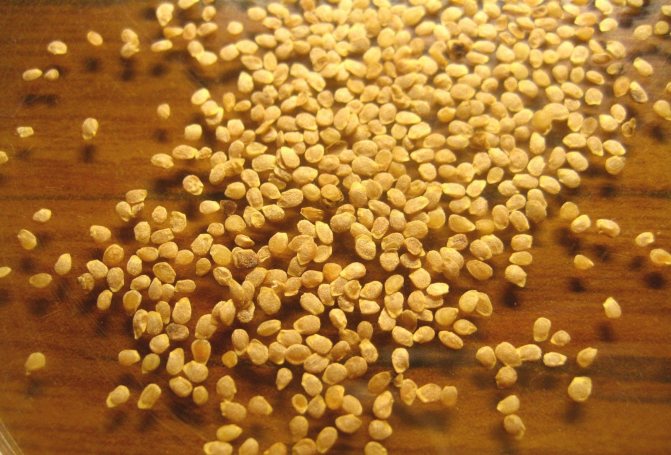

Tomato seeds are small
For quick germination of planting material, it is recommended to germinate it first. The procedure will be as follows:
- The seeds are evenly laid out on the surface of the cotton cloth (you can replace it with gauze or a napkin).
- Cover with the second half of the fabric.
- Placed in a plastic bag for best results.
- They are sent to the battery or to any other warm place.
Advice! Make sure the fabric is damp. The first shoots can be observed on days 5-6.
Growing and planting seedlings
Before you start planting germinated seeds, you need to prepare the soil. It is thoroughly disinfected in the oven or spilled with a solution of potassium permanganate.
Features of growing tomato
These tomatoes are recommended to be grown in seedlings. Seed material should be planted in the last decade of February or in the first decade of March.
It is better to purchase soil for planting in a specialized store, but you can also prepare it at home from garden soil, peat and river sand, taken in equal proportions.
A self-prepared nutrient substrate should be calcined in the oven or spilled with a weak solution of potassium permanganate for disinfection.
Packaging options for tomato seeds "Petrusha-gardener"
The picking of seedlings is carried out after at least 2-3 true leaves appear in the seedlings. Seedlings perfectly tolerate such a procedure, quickly adapt after transplanting and grow well.
During the cultivation of seedlings, they are usually fed twice - the first time two weeks after the pick, and the second time - 10-12 days before the plants are transplanted to a permanent place. Fertilizers with a high nitrogen content are used as such dressings, so that the seedlings grow their vegetative mass faster.
Watering the seedlings is carried out as the top layer of the soil dries up. In this case, stagnation of moisture in the soil should not be allowed, otherwise young plants may be affected by a black leg.
Another feature of this tomato is the ability to propagate bushes by cuttings. Usually, stepchildren or the tops of the shoots are used for this, which must be placed in the water before the roots form.
Then they can be transplanted to a permanent place. Thus, even with a small number of seedlings by cuttings, it is possible to constantly increase the number of Parsley bushes during the season, thereby increasing the fruiting period of this vegetable crop.
Several bushes of this tomato can be planted in a container and left indoors for the winter.At the same time, ripening fruits can be plucked all winter, and by spring - large adult bushes.
When transplanting seedlings to a permanent place, superphosphate or nitrophoska is introduced under each bush (no more than a tablespoon in each well). Further care of the growing bushes consists in carrying out regular watering, applying top dressing, loosening the soil and removing weeds.
You need to water the tomato bushes regularly, preventing the soil from drying out. Although the Petrusha gardener variety, according to experts, tolerates periods of drought calmly, it is better not to allow the soil to dry out regularly in the beds, otherwise the fruits will grow less juicy and tasty.
Water for irrigation should be settled and warm. Irrigation regime in hot and dry summer - once every 2-3 days. If the summer is rainy, then watering is carried out according to the situation.
Very few stepsons are formed on these standard bushes, so vegetable growers do not have to regularly carry out the pinching procedure.
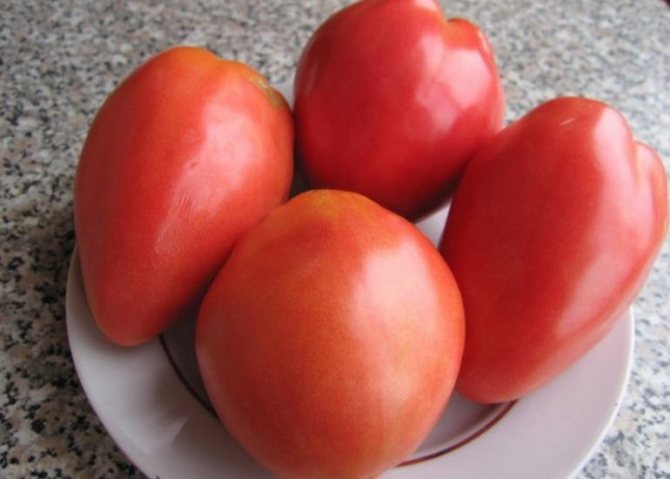

The shoots of the Petrusha gardener tomato are low, but strong and powerful, they can easily withstand the weight of the ripening crop, do not break under its weight, therefore they do not require a garter.
Garter tomatoes
As a result, caring for this variety is easier and takes less time than for tall varieties of tomatoes.
Fertilize the tomato bushes regularly. After planting seedlings in the beds, the next time it should be fed after 12-14 days.
A complex fertilizer for vegetable crops is used as a fertilizer. also a good effect is given by feeding "on the sheet" with a weak solution of potassium permanganate.
To obtain a good harvest, it is necessary to apply fertilizers every 12-14 days, alternating the application of mineral fertilizers and organic matter. Many summer residents bring a solution of cow dung or bird droppings under the bushes.
In greenhouses, the bushes of this tomato grow much more than in the open field. The principles of growing this medium early tomato in greenhouse conditions do not differ from the planting and growth of similar varieties of tomatoes.
The seeds of this variety are small. Tomatoes are grown in seedlings. Sowed in late February - early March, 55-60 days before disembarkation at the main site.
In the phase of two true leaves, the seedlings dive. The process consists in the fact that each sprout is transplanted into a separate container, in which the plant will have much more room to grow and form a branched root system.
They are transplanted to the garden in the second half of May, when the threat of frost has passed. The greenhouse can be planted earlier (for example, in the third decade of April). Planting pattern: 35-40 cm between plants and 40-45 cm between rows (5-6 bushes per 1 sq. M).
When planting in the main place, it is recommended to add 1 tablespoon of wood ash to the hole.
Top dressing
During growth and fruiting, it is advisable to feed the plants 3-4 times with complex fertilizers for tomatoes. Yeast feeding gives good results. Recipe: 80-100 g of fresh yeast and 50 g of sugar are dissolved in 3 liters of warm water. Leave to roam.
When bubbles stop forming, the solution is ready. Add 1 liter of yeast solution to a bucket of water and add it to the root of the tomato.
Tomatoes are grown in seedlings. It is necessary to sow seeds for seedlings two months before the intended planting in the ground. Saplings grow a small dark green color with curly foliage. Planting in open ground is carried out in May, when the night frosts are over.
The pits in the ground for planting are made shallow and about 10 grams of superphosphate fertilizers are added to them. Re-fertilize the seedlings after two weeks by spraying with a weak solution of potassium permanganate.
For proper care, in order to prevent disease of the bushes, such manipulations are necessary as:
- regular watering in the morning;
- constant feeding;
- regular weeding and loosening of the soil;
- removal of dried leaves;
- preventive spraying against parasites.
For the fastest ripening of fruits on the branches, it is necessary to collect ripe fruits in time, freeing up space under the sun for the lower ovaries.
Like most varietal varieties of tomatoes, such tomatoes are recommended to be grown from seedlings. For this, the seeds are sown in separate containers with moist and loose soil. After the seeds have sprouted, it is necessary to wait until 1-2 true leaves appear on the seedlings, and then dive the seedlings into separate pots.
Seedlings are planted in open soil when 6-7 true leaves have already grown on it. It is recommended to plant in a checkerboard pattern, 6 plants are placed on one square meter.
With proper care, every hostess who planted tomatoes Petrusha gardener will be satisfied with the harvest and excellent taste of the tomato.
In the phase of two true leaves, the seedlings dive. The process consists in the fact that each sprout is transplanted into a separate container, in which the plant will have much more room to grow and form a branched root system.
They are transplanted to the garden in the second half of May, when the threat of frost has passed. The greenhouse can be planted earlier (for example, in the third decade of April). Planting pattern: 35-40 cm between plants and 40-45 cm between rows (5-6 bushes per 1 sq. M).
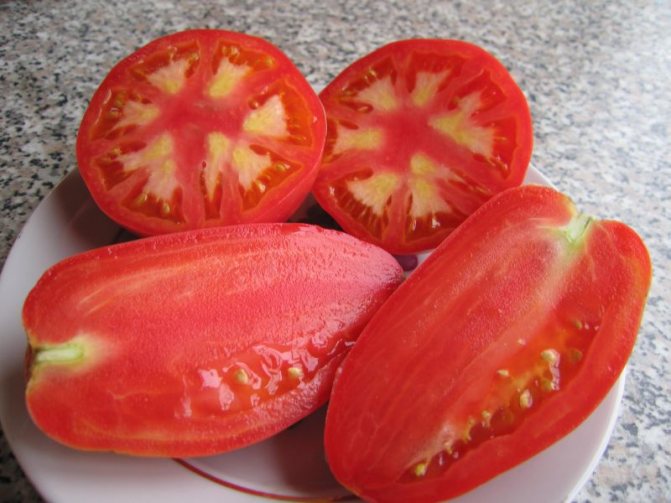

When planting in the main place, it is recommended to add 1 tablespoon of wood ash to the hole.
Top dressing
During growth and fruiting, it is advisable to feed the plants 3-4 times with complex fertilizers for tomatoes. Yeast feeding gives good results. Recipe: 80-100 g of fresh yeast and 50 g of sugar are dissolved in 3 liters of warm water. Leave to roam.
When bubbles stop forming, the solution is ready. Add 1 liter of yeast solution to a bucket of water and add it to the root of the tomato.
With the seedling method of growing, the process begins at the border of February and March. The sprouts take up little space and grow short.
- After a couple of leaves, they dive into separate pots.
- A couple of weeks before planting in the ground, they begin to harden the seedlings with fresh air.
- Rooting in the greenhouse is planned at the end of April, in open soil - in May.
Before planting, add 1 tbsp to each hole. l. nitrophosphate or superphosphate. After 10 days, re-fertilize with complex tomato fertilizer, spray the plant with a solution of potassium permanganate. Then repeat the same every 10-15 days. Summer residents are advised to water the beds with yeast infusion to stimulate growth.
Advice. You can grow this variety of tomatoes in a seedless way: the seeds are sown in a greenhouse at the end of April. Plant care after transplanting into the ground is similar.
This tomato is resistant to root and apical rot, leaf mosaicism, late blight, but prevention will not hurt. To prevent late blight, avoid excessive thickening of the greenery in the garden. It is also important to water the plant in the morning. If tomatoes grow in a greenhouse, arrange regular ventilation. You can spray the bushes with biological products (Zaslon or Barrier), mullein infusion, milk whey, garlic or onion peel infusion.
Top dressing from ash, crushed eggshells or dolomite flour will help to fight top rot. You also need to make changes to the watering regime, because among the causes of the disease is a lack of moisture. At the same time, the tomatoes Petrusha-gardener have Siberian hardening and excellent characteristics.
Landing rules
Like every variety, Parsley gardener will need care and attention. Despite the unpretentiousness, it is still very important how the landing will be carried out, and what further care will be taken. Let's see what you need to do step by step in order to get an excellent harvest later.
Growing seedlings
The yield depends, firstly, on how you grow the seedlings.If you do not know whether the seeds have undergone a disinfecting treatment, then first carry it out yourself - soak the material in a weak solution of potassium permanganate for half an hour.
- Although many people get their first harvest quite early, the characteristics of the variety indicate that this is still a mid-season variety. Therefore, the seeds should be sown within 120 days.
- To make the seeds sprout faster, you can wrap them in a damp cloth or a piece of cloth made of natural material, put them in a container, and wrap them with a plastic wrap or plastic bag on top. Next, locate them in a place where it is warm and dry.
- After 4 - 5 days, if you regularly moisten the material and ventilate, seedlings will hatch.
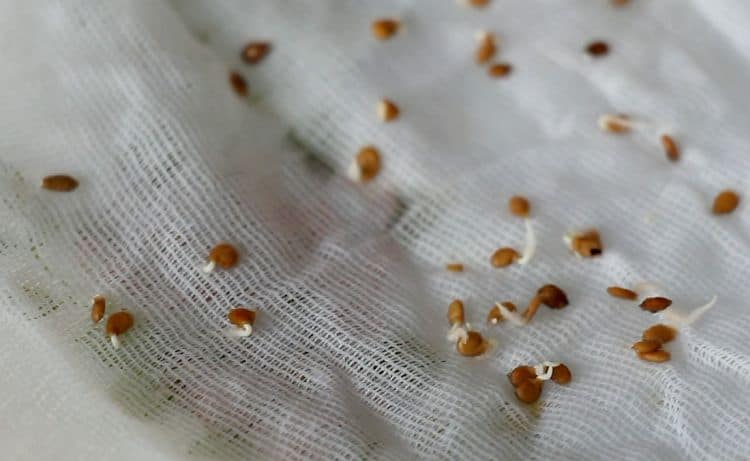

Preparing the soil and sowing seeds
Before sowing the sprouted seeds, it is necessary to prepare containers or separate cups at once. Be sure to put a small layer of drainage on the bottom so that the earth receives oxygen and moisture does not stagnate. Expanded clay or small pieces of foam will do.
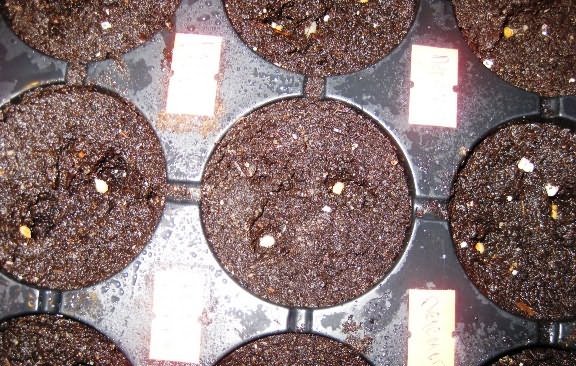

- Next, pour the prepared nutritious and moistened substrate into the cups. Make small holes a few centimeters deep. Place a few seeds in each hole.
- Then sprinkle the seeds with a centimeter layer of soil and wet with a rain method. This must be done carefully so that the seeds do not go far into the ground.
- Cover the containers with foil on top and place them in a lighted place. Do not just put the boxes in direct sunlight, it is better to choose a place with diffused lighting. At first, keep the air temperature at least 23 - 25 degrees Celsius. When shoots appear, then lower the temperature to 18 - 19 degrees.
- In order for the seedlings to be healthy, the daylight hours must be at least 12 hours. Therefore, prepare additional lighting with fluorescent lamps.
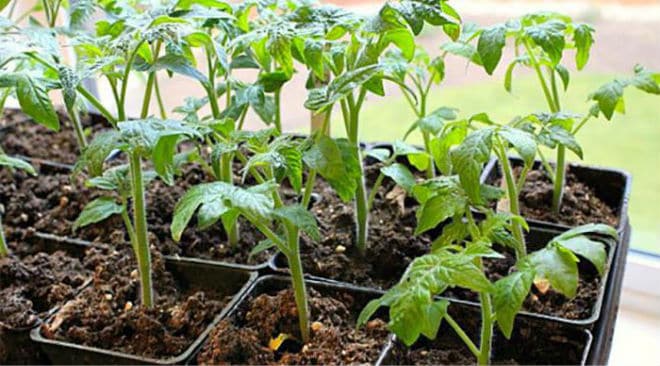

Provided that the planting of seed was carried out in fertile soil, there is no need to fertilize the seedlings. It is only important to ventilate the room and moisten the soil in time so that it does not dry out. Also watch the temperature regime. In a cool room, seedlings may die or stop growing.
Step-by-step instructions: planting seedlings in open ground
Gradually accustom the seedlings to fresh air throughout the week. To do this, take them out into the street, and each time increase the time of stay. So the plants will be hardened and will be maximally adapted for growth and development in the open field.
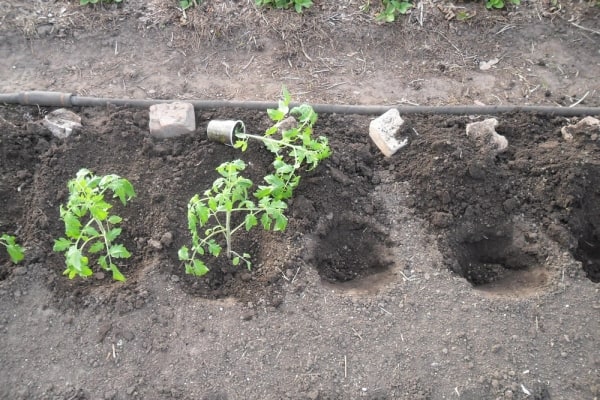

- Dig up the area and apply complex fertilizers before planting. It is better to have cucumbers, cabbage or legumes in front of the tomatoes.
- Treat the soil with Bordeaux mixture to protect the seedlings from infection with viruses or diseases.
- Choose a site that is well lit, preferably slightly sloping, it is possible on the south side, since mid-season varieties need more time and better conditions for the fruits to ripen.
- Avoid damp and swampy areas where there is stagnant moisture or groundwater flowing too close to the ground.
- The soil should be light and loose, add vermiculite or river sand, peat to the heavy soil. Dolomite flour or lime into acidic soil.
- The holes need to be dug 30x70 cm in size. Next, fill the seedlings with soil mixture and water abundantly.
Prevention of diseases and pests
For the prevention of apical rot (it indicates a lack of calcium), it is recommended to do root dressing from ash or wood ash. To prepare the working solution, dilute a liter can of ash in 10 liters of water. You can grind eggshells in a coffee grinder. Powder consumption - 1 tbsp. spoon on the tomato bush.
For the prevention of diseases, it is recommended:
- to relieve the density of the leaves (cut off the lower leaves after the clusters with fruits are formed);
- regularly ventilate the greenhouse;
- water the plants in the morning so as not to create additional moisture at night (the moisture will disappear during the day).
It is important to follow the basic principles of crop rotation: alternate crop growing areas. Tomatoes have not been planted on the same plot for several years in a row.
You can scare off pests with folk remedies. Such tinctures "work" well:
- from garlic. Take 200 g of chopped garlic and infuse for several hours in 5 liters of water. The solution is sprayed onto the aerial part of the plant;
- from onion husks. For 10 liters of water, take 200 g of onion husks, insist for 10-12 hours. The solution is sprayed on the bushes.
Prophylaxis
For the prevention of late blight, or "Black Fire", as this fungal infection is also called, it is necessary:
- do not thicken the planting of seedlings;
- water in the morning;
- it is important to regularly ventilate the greenhouse;
- feed with a biological product;
- you can use traditional methods (for example, herbal infusions, mullein).
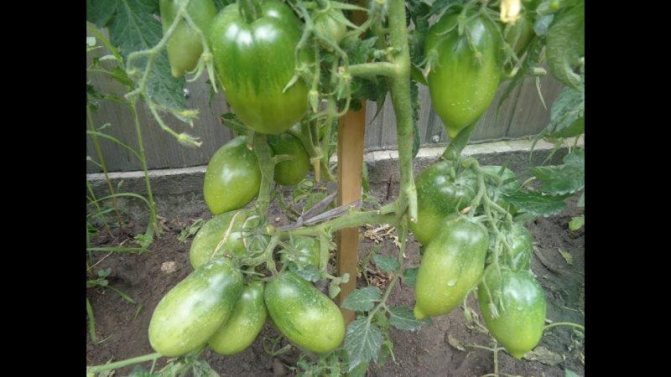

If the leaves turn light green or brown, these are signs of a mosaic leaf. In this case, it is necessary to immediately remove the stained leaves, and the seeds (and this is a disease of the seeds) - to ignite before planting in the soil.
The tomato "Petrusha gardener" has a fairly good immunity to typical diseases of tomatoes, it is practically not afraid of late blight and root rot. Basic preventive recommendations:
- Avoid thickening of plantings, watering early in the morning, airing the greenhouse structure;
- For spraying the bushes, use the biological products Fitosporin, Zaslon, Barrier. Use folk remedies - herbal infusions, mullein. It is most effective to spray the leaves with milk whey, as well as infusion of onion and garlic husks;
- Vertex rot occurs when there is a deficiency of moisture, calcium, and also when oversaturated with nitrogen. You can prevent the risk of disease by feeding dolomite flour, crushed eggshell;
- Poor quality seed material can cause leaf mosaicism. The affected leaves are immediately removed, and the seed material is calcined before sowing.
The variety is resistant to late blight.
It is important to follow the basic principles of crop rotation: alternate crop growing areas. Tomatoes have not been planted on the same plot for several years in a row.
Care
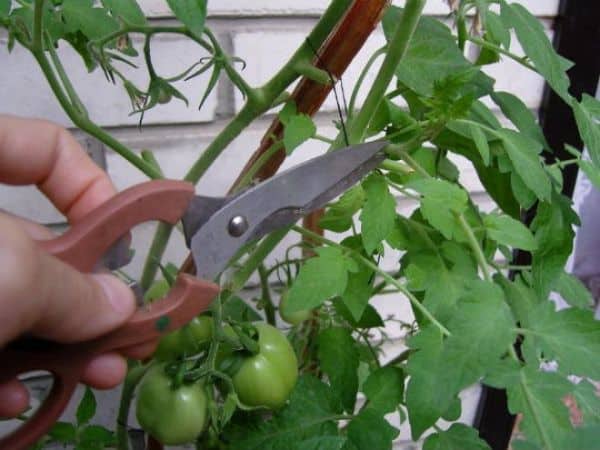

- In order for Petrusha gardener to grow up healthy, it is necessary that the night temperature is at least 14 degrees, and the daytime temperature is 20 - 23 degrees, it is desirable to maintain the humidity around 60 - 65%.
- After 2 weeks, the tomatoes must be spud and loosened up the soil.
- Next, tie up the stem and remove the lowest leaves for better air circulation.
- Water at room temperature with water sparingly as the soil dries.
- Try not to add organic matter often, so that the aerial part of the bush does not grow. Mineral fertilizers are applied several times: the first time is applied 14 - 20 days after planting (phosphorus), the second - with ammonium nitrate during the period of fruit formation.
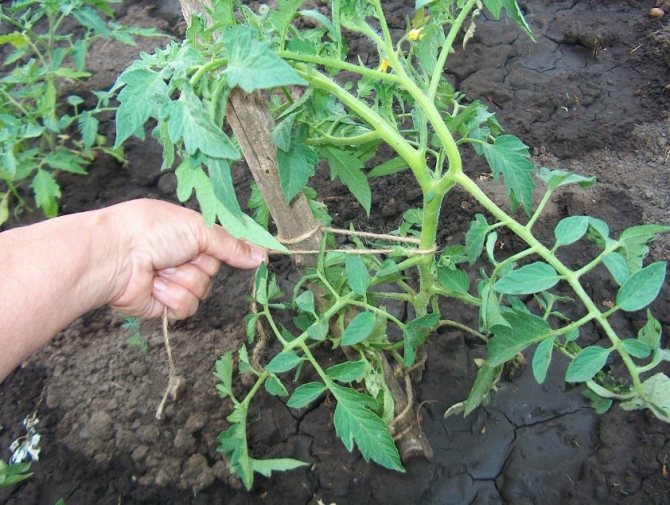

Yield
The yield of the "Petrusha gardener" variety from each bush reaches from 4 to 6 kg. A characteristic feature is the fact that when grown in unprotected soil, the yield is significantly higher than in greenhouse conditions. This is due to the fact that for the growth and development of culture, fresh air and soft sunlight are needed.
Tomato "Petrusha gardener" is recommended for cultivation in all regions of Russia, even in the northern ones, since it was bred specifically for Siberian conditions.
Tomatoes Petrusha gardener on video
If you have grown tomatoes Petrusha gardener, please write if you liked them. What was the yield and taste of the fruit in your climatic conditions? Will you grow them again? How do you rate the resistance of this tomato to diseases and pests? Describe briefly what, in your opinion, are the advantages and disadvantages of this tomato. If possible, attach a photo of the entire bush as a whole or individual fruits grown by you to your review. Thank you!
Your reviews about the tomato Petrusha gardener and additions to the description will help many gardeners evaluate this variety objectively and decide whether it is worth planting it or not.
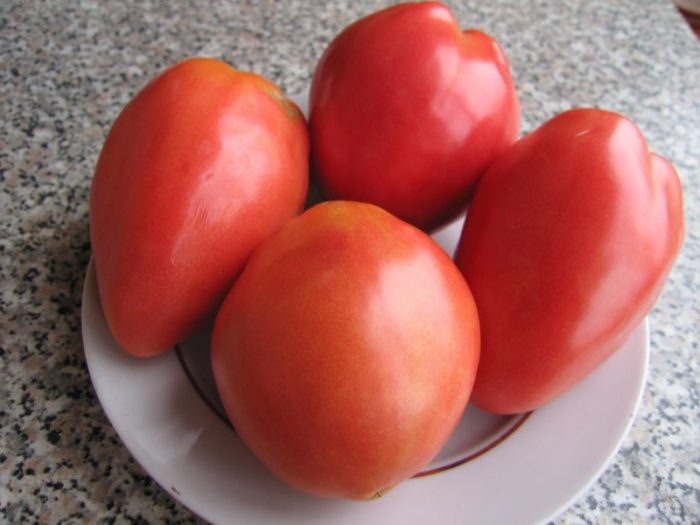

Most likely, the marketers are to blame, who slightly "exaggerated" the quality of the fruit, and the amount of the crop, describing it on the bags with seeds. Tomato "Petrusha gardener", the characteristics and description of the variety of the state register are more modest than the description of the packers and vegetable growers were ultimately disappointed.
Reviews of vegetable growers
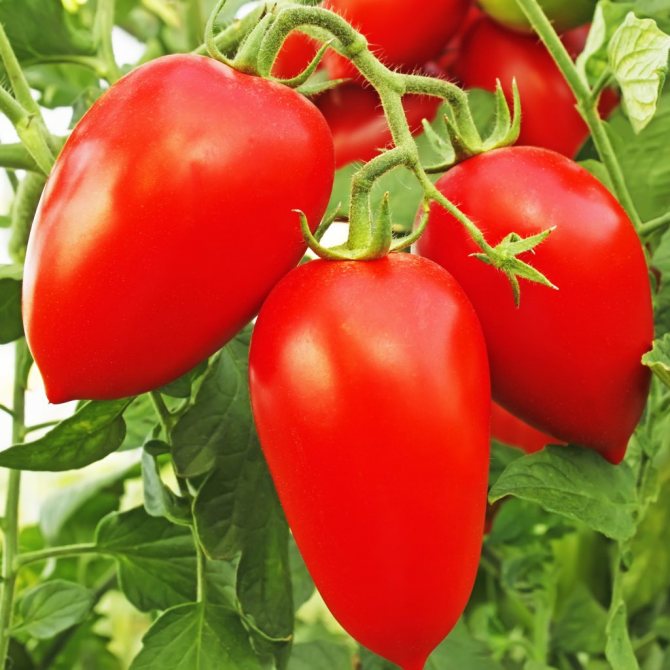

Tomato Petrusha the gardener has earned positive reviews from gardeners, who distinguish it favorably against the background of other varieties.
In their opinion, the tomato has valuable characteristics:
- has a long fruiting period;
- does not require pinching;
- bears fruit in the garden, regardless of the weather;
- tolerates dry periods well;
- resistant to many diseases of tomatoes, does not require additional treatments for diseases;
- versatile in use.
Among the disadvantages of the variety, gardeners call the need to comply with the conditions and rules of cultivation. Some vegetable growers who grew tomatoes of the Petrusha gardener variety in greenhouses also attribute weak pollination in greenhouse conditions to disadvantages.
Experienced gardeners note that the Petrusha gardener variety has another feature - the ability to grow by cuttings. To do this, you can use the stepsons and the tops of the branches, which are placed in water or in damp ground for 10 days. Thus, it becomes possible, with a minimum number of seedlings, to constantly increase it, respectively, increasing the fruiting period.
Parsley the gardener allows you to feast on your tomatoes all winter. To do this, you must leave it indoors in a container, constantly break off and root the shoots. There will always be fresh tomatoes on the table, and adult plants by spring.

